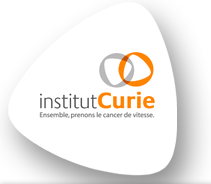Biological nanomotors, driving forces of life
Les nanomoteurs, forces au cœur du vivant
Résumé
Life is driven by awe-inspiring coordinated movements observed in cells and tissues. In each cell, nm-size molecular motor proteins contribute to these movements as they power numerous mechanical processes with precision and complex orchestration. For the multiple functions that an eukaryotic cell accomplish, motility is essential both at molecular and cellular scales. Tissue morphogenesis, cell migration, cell division or cell differentiation are all controlled by the precise action of such nanomotors that work on cytoskeletal tracks using ATP as fuel. The study of motility has a long history and scientists of all disciplines have contributed to its understanding. The first part of this review compares myosin and kinesin motors to describe the principles underlying how motors convert chemical energy into mechanical movement. In a second part, I will describe how sequence differences selected through evolution can lead to distinct force production output despite a common mechanism. Motors within a superfamily can thus carry out distinct functions in cells. Such differences give rise to their individual, specific motility properties, including reversal of directionality or ability to organize cytoskeletal tracks. The power of structural biology to reveal unexpected and surprising structures, with certainty when visualized at atomic resolution, has been a great advantage for this field. The critical insights gained from the structures can be carefully tested with functional experiments, leading to progress in defining the role motors play in cells. Last, I will describe how targeting these motors can be beneficial for human health. Allosteric sites for specific small molecules can act as activators or inhibitors of the force produced by these nanomotors. While frequent sites of mutations in these motors can lead to disease phenotypes, high therapeutic potential of allosteric effectors is now established for heart muscle diseases and should be extended to treat other pathologies.
Domaines
Sciences du Vivant [q-bio]
Origine : Fichiers éditeurs autorisés sur une archive ouverte
